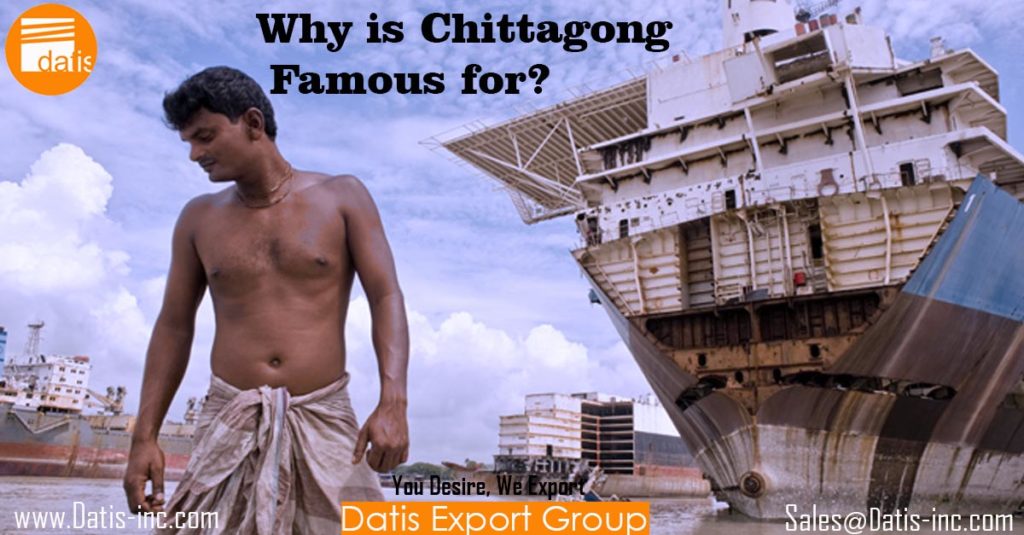Chittagong plays a vital role in the Bangladeshi economy. The Port of Chittagong, one of the world’s oldest ports, whose coast appeared on Ptolemy’s world map, is the principal maritime gateway to the country.
The port is the busiest international seaport on the Bay of Bengal and the third busiest in South Asia.The Chittagong Stock Exchange is one of the country’s two stock markets. Several Chittagong-based companies are among the largest industrial conglomerates and enterprises in Bangladesh.
The port city is the largest base of the Bangladesh Navy and Bangladesh Coast Guard; while the Bangladesh Army and Bangladesh Air Force also maintains bases and contributes to the city’s economy. Chittagong is the headquarters of the Eastern Zone of the Bangladesh Railway, having historically been the headquarters of British India’s Assam Bengal Railway and East Pakistan’s Pakistan Eastern Railway. A controversial ship breaking industry on the outskirts of the city, which supplies local steel but causes pollution, has come under international scrutiny.
A substantial share of Bangladesh’s national GDP is attributed to Chittagong. The City generated approximately $25.5 billion in nominal (2014) and US$67.26 billion in PPP terms converted from nominal GDP of $25.5 Billion dollars with a nominal vs. PPP factor of 2.638.
contributing around 12% of the nation’s economy. Chittagong generates for 40% of Bangladesh’s industrial output, 80% of its international trade and 50% of its governmental revenue.
The Chittagong Stock Exchange has more than 700 listed companies, with a market capitalisation of US$32 billion in June 2015.
The city is home to many of the country’s oldest and largest corporations. The Port of Chittagong handled US$60 billion in annual trade in 2011, ranking 3rd in South Asia after the Port of Mumbai and the Port of Colombo.
The Agrabad area is the main central business district of the city. Major Bangladeshi conglomerates headquartered in Chittagong include M. M. Ispahani Limited, BSRM, A K Khan & Company, PHP Group, James Finlay Bangladesh, the Habib Group, the S. Alam Group of Industries, KDS Group and the T. K. Group of Industries.
Major state-owned firms headquartered there include Pragati Industries, the Jamuna Oil Company, the Bangladesh Shipping Corporation and the Padma Oil Company. The Chittagong Export Processing Zone was ranked by the UK-based magazine, Foreign Direct Investment, as one of the leading special economic zones in the world, in 2010.
Other SEZs include the Karnaphuli Export Processing Zone and Korean EPZ. The city’s key industrial sectors include petroleum, steel, shipbuilding, chemicals, pharmaceuticals, textiles, jute, leather goods, vegetable oil refineries, glass manufacturing, electronics and motor vehicles.
The Chittagong Tea Auction sets the price of Bangladesh Tea. The Eastern Refinery is Bangladesh’s largest oil refinery. GlaxoSmithKline has had operations in Chittagong since 1967. Western Marine Shipyard is a leading Bangladeshi shipbuilder and exporter of medium-sized ocean going vessels. In 2011–12, Chittagong exported approximately US$4.5 billion in ready-made garments. The Karnaphuli Paper Mills were established in 1953.
International banks operating in Chittagong include HSBC, Standard Chartered and Citibank. Chittagong is often called Bangladesh’s commercial capital due to its diversified industrial base and seaport. The port city has ambitions to develop as a global financial centre and regional transshipment hub, given its proximity to North East India, Burma, Nepal, Bhutan and Southwest China.
